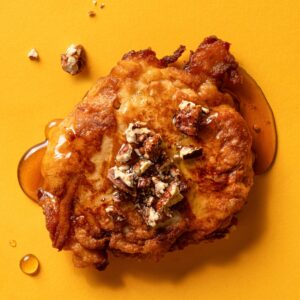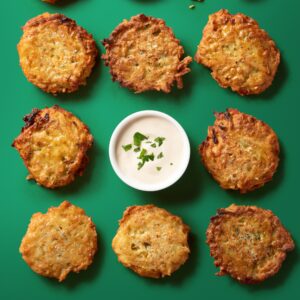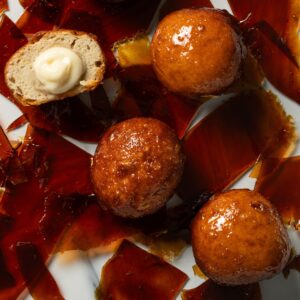Peas love & carrots
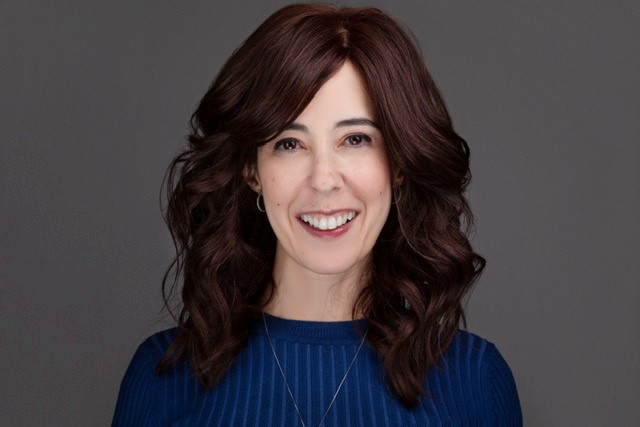
Danielle shares the story behind the book
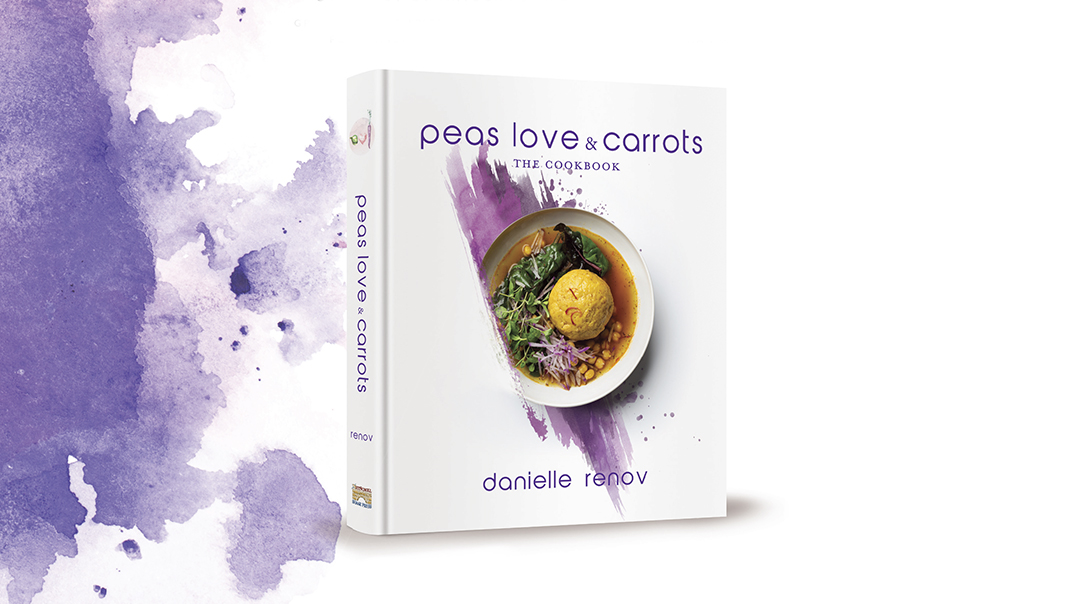
I knew that there would be a lot to include in an article with Danielle Renov. As a blogger, vlogger, recipe developer, writer, podcaster, Kosher.com recipe instructor, and now cookbook author, I didn’t doubt that her experience would bring a wealth of information.
We know you’re constantly busy with your family, blog, Kosher.com videos, and, of course, writing for Family Table. What spurred you to add a cookbook into the mix?
I had the ideas and material for a full cookbook a long time ago, but with family commitments (a crowd of little people at home), coupled with my desire to just start sharing my recipes with the world, I decided instead to create a blog and post recipes three to four days a week.
There was immediate gratification in doing that. The feedback was very positive. I loved knowing that people were coming to my table via cyberspace and learning instantly. I had no agenda other than to create this blog and share ideas of how to make tasty, clean, creative, and family-bonding food.
But things snowballed, and to make a long story, well, less long, three-and-a-half years later, I was asked to sign a contract with ArtScroll to write a cookbook. And here we are!
I reflected on whether it made sense to write a cookbook when so much content was being shared online. But many people told me that searching for recipes and having them available for Shabbos was getting cumbersome. So it seemed that the time had come.
We know that Hashem orchestrates all things. But when we had to postpone the initial book release due to the technical constraints brought by the global pandemic, I got a first-hand reminder that Hashem is in control. In the end, instead of it coming out on May 15, it’s coming out July 31. It could have come out six days earlier, but that would have introduced it to the world during the Nine Days, and since I waited this long, obviously I didn’t feel like the time of our nation’s mourning was auspicious to share something that brought me (and hopefully will bring my readers too) so much joy.
Who is the quintessential PL&C reader?
I am very aware, even from my own experience, that while there are some people who loooooove to cook and are always craving new ideas and techniques, there are probably just as many who aren’t as motivated, or who are motivated but struggle with the efficiency part of it. Honestly, every woman, to some degree, is a synthesis of these women. When I have a particularly busy time in my life, I won’t seek the craziest recipe — and if I do, because I really want to try something new, I use shortcuts.
A message that I think resonates with all women in Klal Yisrael who are cooking two multicourse Shabbos meals every week and adding on even more for Yom Tov a few times a year is this: If you can’t do it all, do whatever you can. There are so many shortcuts and prepared options that can save you time, like buying pre-chopped veggies, prepared marinades, or already skewered cuts of meat. You can also prepare easy recipes in bulk and stick some of the food in the freezer for the days you can’t make dinner, and on and on. The goal should be that the food brings your loved ones together. If any resentment or feelings of anxiety seep into the prep, it’s going to be felt in the food. Do what works for you.
This cookbook really does have these options and, best of all, lists them in each recipe to help give you better ideas of how to save time, freeze ahead, or use substitutes to utilize the stuff you probably already have in your fridge, freezer, or pantry.
Can you tell us a bit about how you started your blog? And how did you come up with your name, Peas Love & Carrots?
Back in 2013, my parents came to visit us in Israel, as they often do, and I met them at their hotel. I met a Jewish fashion blogger there who told me about Instagram and downloaded it for me on my phone. I started finding and following chefs I respected who worked in the secular world, and noted what they did online that was successful. And then I started thinking, Okay! I could do this! As soon as I started my own page, I realized that there are other Jewish women who were running their own pages, and I immediately connected with them. The community was amazing. It was really warm and welcoming.
At the same time, I realized that it’s important to diversify my online voice, and a blog was the natural way to do that. Because I had no experience in building a site, I went to the school of YouTube and I learned how to use WordPress from 15-year-old Chinese and Russian kids.
Coming up with an account name was much easier. The name I originally had in mind was taken, and then literally the next name that popped into my head was Peas Love & Carrots, and I was like, “Oh my goodness, I love it.” I went with it and never looked back.
Somme people say, “Now that you’re a grownup blogger, you should change your name,” and I’m like, “Are you kidding me?” This is the most grownup name I can think of.
Where do the recipes in your cookbook come from, and what sets it apart from the hundreds already out there for the frum homemaker?
Around half of the recipes are the most popular ones from my blog, and the rest I created just for the cookbook. I could probably have put in another 50! The recipes are so intuitive that I was able to put together a list of recipes for the publisher in under three hours. It’s like this cookbook was fermenting in my head for the past three years, and when the time came to create it, it was good to go.
When I set out to organize the structure of the book, my many friends who have embarked on their own cookbook journeys sent me their resources, PDFs, and spreadsheets, but I was getting overwhelmed with all these organizational tools. I am very visual and tactile, and I needed to do this my way. So I bought oaktag and stickers and pens and markers, and I created my vision the old-fashioned way.
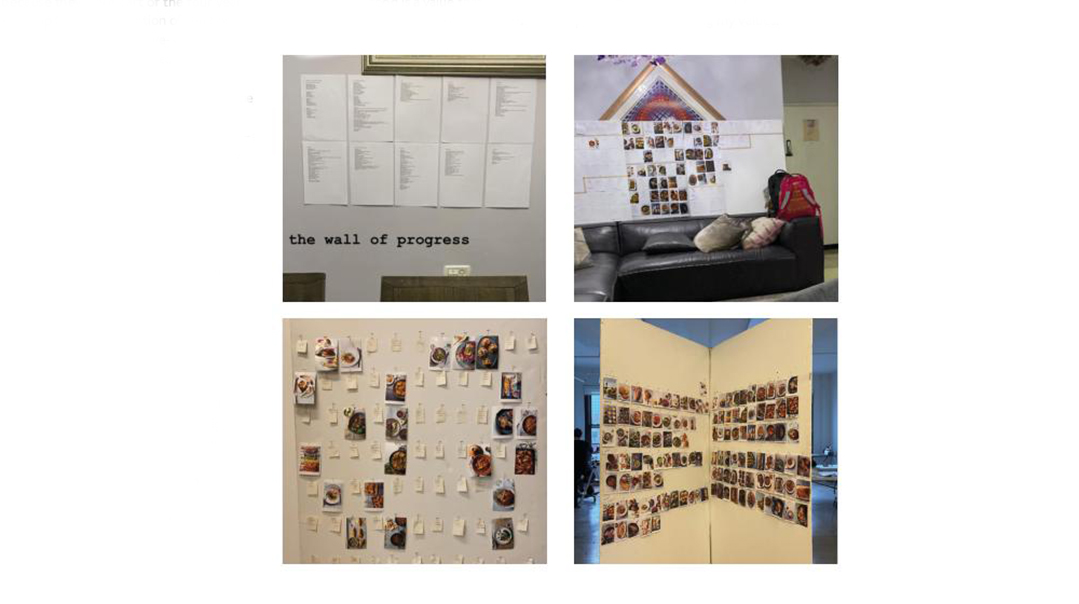
I want anyone who uses this book to find what they seek with minimal effort. That’s why each section is set up by the most basic category. I didn’t divide categories by the typical sections of appetizers, mains, holiday dishes, and so on. You want chicken as an appetizer? I trust you to go to the chicken section and find something there that you can turn into an app. I also set things up so that each chapter begins with less expensive recipes and graduates to the most expensive. In the meat section for example, you’ll first find the recipes for ground beef and later on the recipes for fancy cuts of roasts. Who am I to tell you which you’ll use for a Yom Tov meal or weeknight dinner?
Finally, the dairy section is like its own mini cookbook. I used to get so frustrated when a recipe caught my eye and, as I read further, I saw it was dairy. For us as frum Jews, a dairy recipe has its own considerations. So if it’s dairy, it’s in that section.
As I see it, I give you the resources and you do as you see fit. If you’re generous enough with you shelf space to add my book to your recipe collection, I want it to be worth your while. That’s why there are 41 plus recipes for chicken and 15 of them are weeknight-dinner worthy!
Overall, the entire book has 254+ plus recipes. I say “plus” because some recipes have bonus recipes on the page. (The first that keeps on giving.) And that’s with the publisher cutting out many that I wanted to add because there was no room.
I wasn’t looking to reinvent the wheel, but at the same time, I didn’t want to produce a resource that was just a slight variation of all the other wonderful cookbooks that have been authored for our community over the past few years. I also feel like the diversity of cultures and styles and levels of difficulty (think simple and easy to uber-patchke) speaks to all cooks – from the ones who prepare ten-course meals to those who dread making ice cubes. Because, after all, food has a purpose. To nourish our bodies, it’s true, but it’s how I, and I suspect many other women, do their avodas Hashem. I think it’s the best time to pass on values to our families.
Another important thing to me was that when someone makes a recipe from this book, it should look exactly the way it does in the picture. I hired the best possible team, people I knew I could trust, to work on this project. I knew that I needed my hands in the photography, cooking and styling to ensure everything comes out the way I make it at home.
Values are clearly at the forefront of your mind. What did you learn as a child that steers how you give over these kitchen-related values to your kids?
My parents’ food histories couldn’t be more different. My mom is from Morocco, and my father has a more Ashkenazi culinary background. My mom is a fabulous cook, and my father is a real foodie.
Besides that, I’m pretty artistic, and the aspect of the styling and photography of the food fills this art void within me.
My confidence in the kitchen though, truly comes from my parents. The first thing I learned to make as a child was Duncan Hines brownies. I started making them in second grade, since my mom wasn’t a huge dessert person. Every week she would buy a box of Duncan Hines brownie mix, and no matter what, if we had company or not, I baked them. I can still recall the excitement I felt as my parents clapped and cheered and said, “Look at the brownies Danielle made. These are the best brownies we’ve ever had.”
As the years progressed, I got creative with those brownies, adding peanut butter or nuts and marshmallows, chocolate chips – basically all the fun stuff. But it was that positive reinforcement that instilled a love for cooking for me. My weekly brownie pep rally set the foundations of who I am today.
Now I’m the parent, and I encourage and empower my own kids in the kitchen.
There’s no first lesson when I teach my kids cooking. They’re with me in the kitchen from the second they’re born. My daughter Elisheva is 16 months old, and she sits on the counter and mixes vegetables.
I also let my kids use a knife to cut at a very young age. The best way to teach knife safety is to teach proper knife usage. I want them to be secure and confident in the kitchen, and there are very few things one can prepare to eat that doesn’t involve a knife. Teaching them early gives them a lot of confidence. Baruch Hashem, we’ve had minimal fallout from this approach.
How do you make sure that your husband and kids stay at the forefront, even when you’re so busy with your job?
I only proceed with anything in my job with the advice of our rav. And my kids are involved from day one. There’s no “Mommy’s life” and “their life”. None of this would be worth anything without my husband and kids’ support. They always were and always will be the first people to celebrate with me.
People have asked me how the recent quarantine affected my cooking style and hosting approach. The answer is, it didn’t. I never cooked to impress. My cooking is a byproduct of my love. And my family is the recipient of that love. We love guests and they too get to partake, but impressing company has never been and will never be the goal.
And how was that credo paid forward into this book?
Creating family-favorite recipes felt very obvious to me. When I started my blog, I realized that I didn’t want something separate from my kids. If I wanted to show people how I cooked and how we eat as a family, I wanted my kids to be part of it and not separate from it. When I wrote my book, they were so woven into the fabric of it because they were part of the four years leading up to the culmination of the book.
My dream was to have a five-or six-page index that listed all the recipes and categorized them by all my children’s preferences. Space limits left us with only one page, but I think this section — which divides favorites by boys, girls, and my husband, Eli — shows my kids are just like your kids, and my husband probably has similar preferences to your husband, or your brother or your friend, or whoever is the pickiest eater in your house. It was just another way to give you more information in the book.
People ask me, “How do you get your kids to eat some of these foods?” And I always say, well, I make foods I know they like. If I’m making something I specifically know they don’t like, I’ll go out of my way to make something they do like. Of course, if I prepare something they normally eat and they’re just not in the mood, cereal and milk is a great alternative, and some nights (because I’m human!) cereal and milk is even the dinner itself.
the dinner itself. However, it’s my job as a parent to provide nutritious food my children like to eat. And besides, they provide a really important service. My kids are my first line of defense. Each has their own palate.
For example, Dovi is the adventurous one. Batya, Maggie, and Elisheva can handle Moroccan-level-spicy five-alarm food. Meir and Leah like spicy, but can’t handle it to that level. So that’s a good barometer for me when figuring out if something is too spicy or not. At the end of the day, they’re deeply involved because their feedback is so valuable. People tend to discount the value of a child’s opinion, but children are insightful. They are smart and perceptive and brutally honest, which is great feedback.
Your values in life come through a lot in your cookbook. Did you have any challenges in that area?
I think that my goal of bringing people together with food is a value that emphasizes the people before the food. But as someone whose recipes and demos and speeches are broadcast to a lot of people, I’m often faced with offers that might not be aligned with those values.
When there are opportunities that come my way that may compromise my dedication to the level of kashrus I’m comfortable with, or the sanctity of Shabbos, or something as simple as leaving my family more than I am comfortable with, I need to think it through. And yes, sometimes when I’m making the decision, I grapple a lot. Now that I’ve been tested in that area, I’m so much stronger in my values. It’s strengthened that in me.
But then I look back and I’m so proud that my values weren’t compromised because of a job. And, honestly, this is more than a job for me. Because I absolutely love what I do.
Yet nothing in my life will bring me to a point of compromising my values.
Oops! We could not locate your form.

